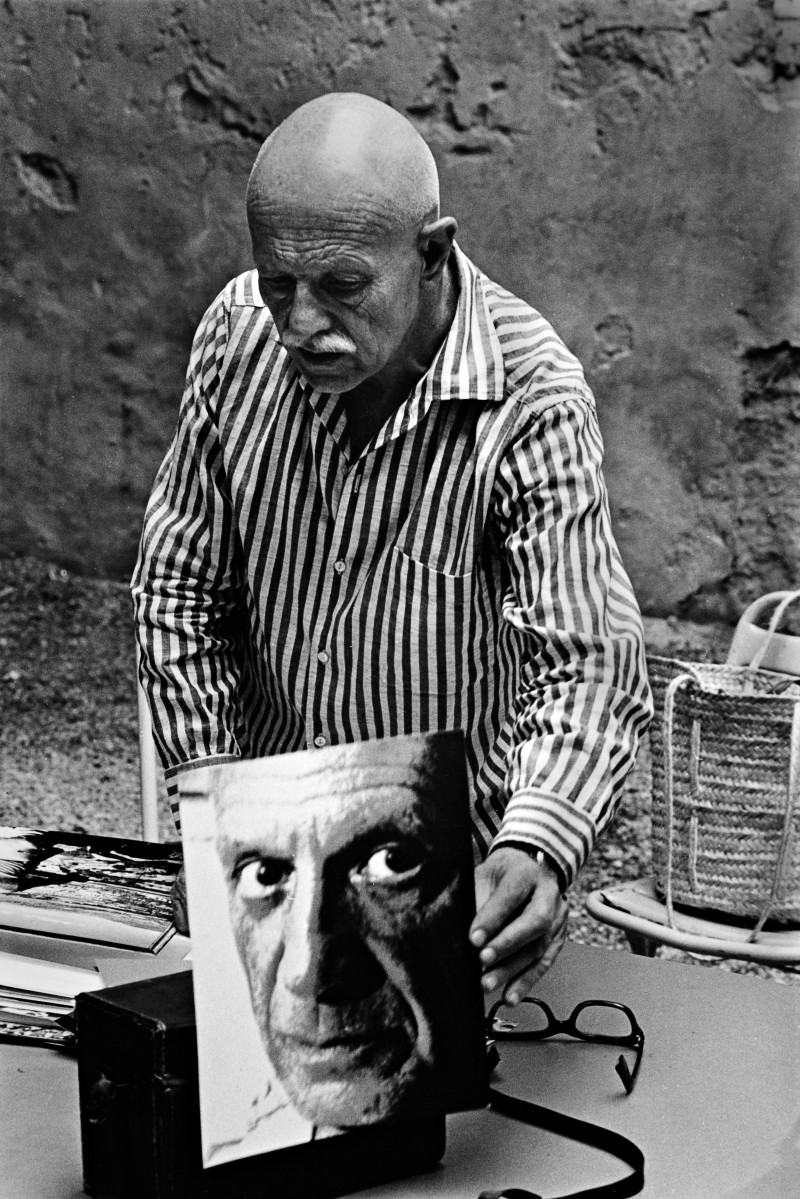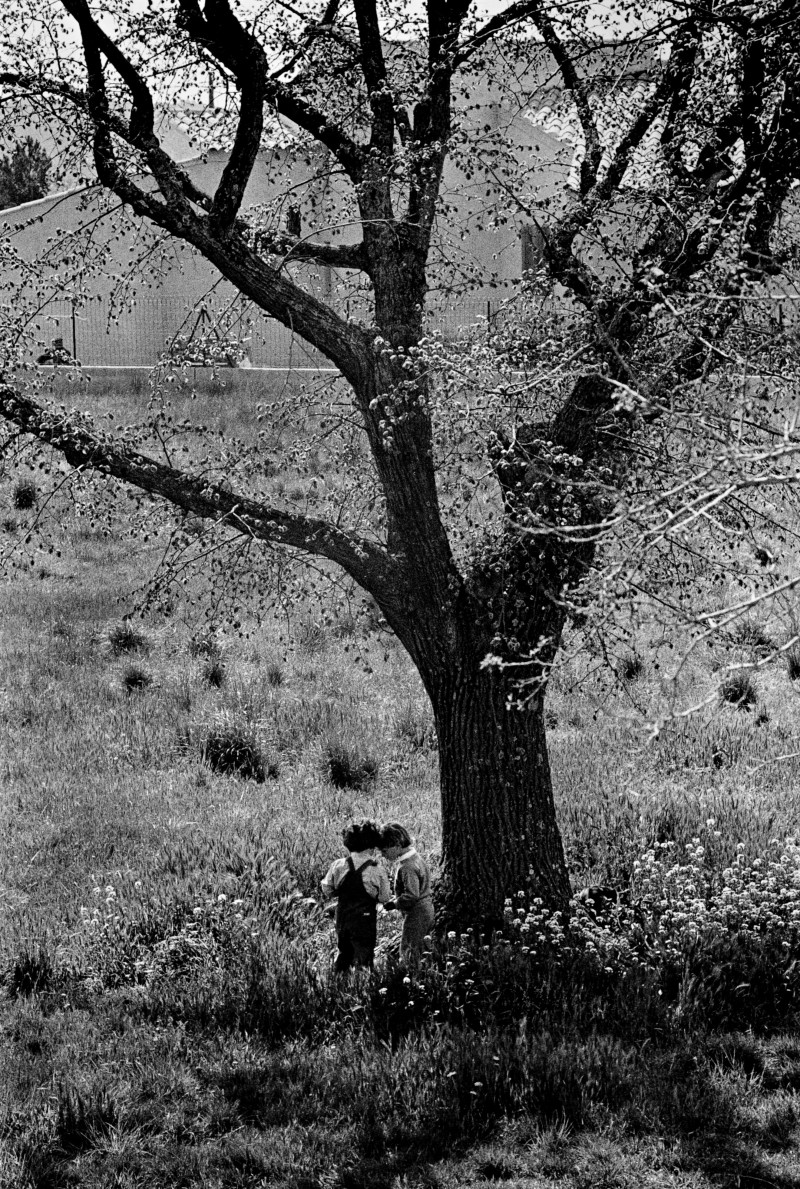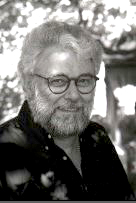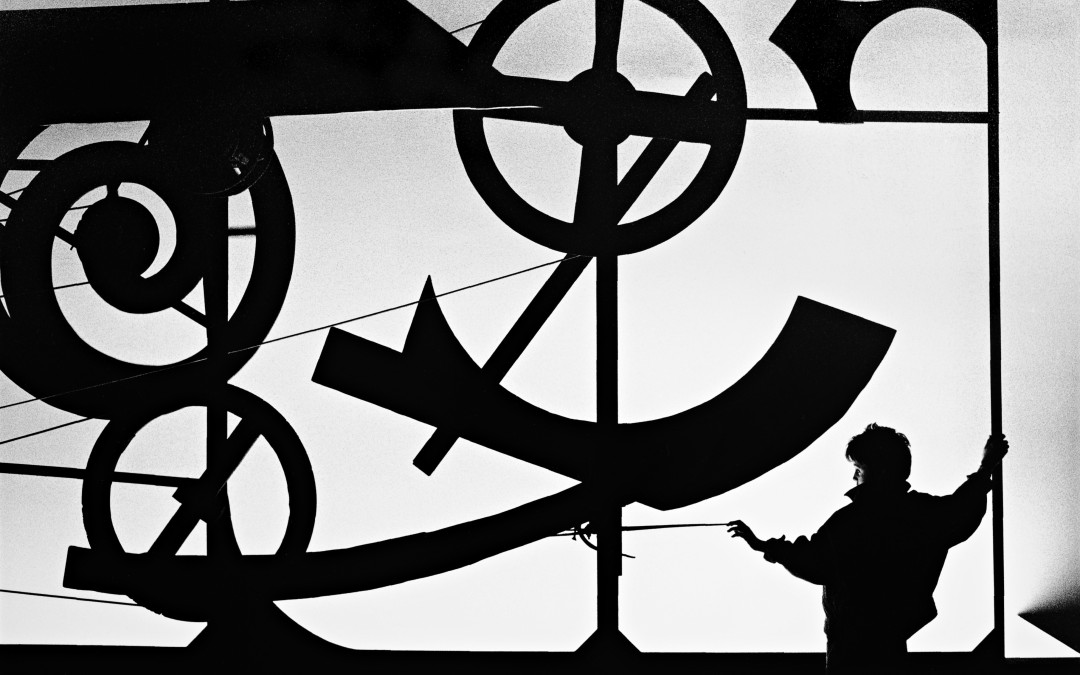ExpositionTinguely |1989 All images ©Pierre-Jean Amar. Used with permission.
***
***
Friend to Photographers
AAA
Has His Own Images to Share
***
***
With Mike Foldes
Founder, Managing Editor
Translation by Hélène Gaillet de Neergaard
***
***
Ragazine: It’s a pleasure to work with you on this e-interview. To begin, can you tell us a little about the photograph that recently appeared in L’Oeil de la Photographie, which is what brought your work to our attention, and something about La Photographie à Aix-en-Provence?

“Virginie” ©Pierre-Jean Amar
Pierre-Jean Amar: La photographie qui a été publiée dans L’Oeil de la Photographie fait partie d’une série ancienne que j’ai faite sur le thème du “Drap” et du corps. Comme beaucoup de mes images c’est un détail et pas un corps entier et je m’apercois aujourd’hui avec le recul que j’ai beaucoup photographié les fesses de mes modèles!!! J’ai une grande série sur ce thème. D’ailleurs depuis 20 jours j’en mets une tous les matins sur Facebook et j’ai de nombreux amis qui viennent les voir chaque jour.
La Photographie à Aix-en-Provence est une association culturelle que j’avais créée il y a 15 ans. J’organisais tous les ans une grande exposition de photographes connus (Ronis, Cartier-Bresson, Gilson, Fontcuberta, Navarro, Capa, Bischop, Fessy, Brihat, etc.) Pour chaque exposition j’éditais un livre et en plus j’organisais 9 conférences publiques par an sur un thème (le nu, le paysage, le photojournalisme, la mode, la nuit, l’humour, etc.). Cela a duré 15 ans et s’est arrêté l’année dernière par manque d’aides publiques.
PJA: My photography work recently published in L’Oeil de la Photographie is part of an older series, which I once created on the theme of “Sheet” (as in bed linens) and the body. Similar to many of my images, I show only details, not a whole body. In hindsight, I notice today that quite often I focused on the bottoms of my models!!!
I have a large series on this theme. In fact, just in the past 20 days I have posted one each day on my Facebook page, and a multitude of friends check in regularly to view them.
La Photographie à Aix-en-Provence is a cultural association I created fifteen years ago. Each year I would organize a large photography show of renowned photographers: Ronis, Cartier- Bresson, Gilson, Fontcuberta, Navarro, Capa, Bischop, Fessy, Brihat, etc. and would also publish a book about that year’s show. At the same time I organized nine annual public conferences with specific themes such as the nude, landscapes, photojournalism, fashion, nighttime, humor and so on, but failed to continue when my public funding dried up last year.

Willy Ronis | 1976
Q) I see that you are an emeritus of the friends of Willy Ronis, a group organized to protect the rights to photos by the late French photographer, whose work is included as among the greatest of his generation. How well did you know Ronis, and what was the nature of your friendship?
A) J’ai rencontré WR à l’Université en 1977 lorsque j’étais étudiant. Il donnait un cours d’histoire de la photographie. Nous sommes devenus très amis et j’ai tout fait pour que son œuvre soit reconnue. J’ai réussi à le convaincre de faire un livre rétrospectif (Sur le fil du hasard Ed. Contrejour. 1979) et à partir de là sa reconnaissance publique a commencé. Notre amitié a duré 40 ans et j’ai fait beaucoup de choses avec lui. Expositions, livres, portfolios, tirages etc. J’ai en particulier édité 4 portfolios qui regroupent 43 de ses photos les plus importantes, dont je suis propriétaire et que je commercialise ainsi que des tirages individuels et des vintages. Il était un second père pour moi.
A) I met Willy Ronis in 1977 when I was a University student. He taught a course on the history of photography. We became close friends and I worked hard to get his work out there.
I was able to convince him to publish a book on his work. “Sur le fil du Hazard” .
Editor Contrejour, was published in 1979 and that ‘s when he started becoming popular. Our friendship lasted 40 years, working often together on exhibitions, books, portfolios, prints and more. Personally, I edited four portfolios grouping 43 of his most important photographs, which I now own and sell as well as vintages and single photos I love. He was like a second father to me.
Q) When did you become interested in photography, and when did you realize it would become your life’s work?
A) J’ai commencé à m’intéresser à la photographie quand j’étais au lycée. J’avais 16 ans. Avant je faisais de la peinture (très mauvaise!!!). Au début cela n’était qu’un hobby, mais très vite j’ai senti que cela était important et un ami peintre m’a encouragé à poursuivre. Deux ans après avoir commencé je faisais ma première exposition à Marseille et depuis 50 ans je n’ai pas arrêté!
Mais je ne pensais pas en faire un métier et j’ai fait de longues études à l’université en littérature française. A la fin de mes études (j’avais déjà près de 10 ans de photo derrière moi et au moins 15 ou 20 expositions en Europe) j’ai décidé de ne pas enseigner la littérature et de devenir photographe. Je suis allé au Festival d’Arles à partir de 1974 et j’y ai rencontré tous les plus grands photographes. Certains m’ont encouragé dans mon travail comme Ansel Adams et Youssouf Karsh.
A) My interest in photography began when I was 16 years old, a Lycée student. Before that I tried painting, horrible!!! At first it was just a hobby but when a painter urged me into photography I sensed it could be an important part of my life. My first show was only two years after I began to explore the medium, this was in Marseille and for the past 50 years I simply never stopped!
I didn’t see photography as a career as I spent years studying French literature. But at the end of my studies, having accumulated nearly 10 years in the world of photography and at least 15 to 20 shows throughout Europe, I decided to become a true photographer rather than a literature teacher. In 1974 I went to the Arles Festival where I met all the current famous photographers and some, like Ansel Adams and Youssouf Karsh, encouraged me to continue.
Pierre-Jean Amar / Nudes
***
[layerslider id=”19″]
***
***
Q) What kind of camera do you use, and why? Have you used others?
A) J’ai utilisé tous les types de camera : de la chambre 13×18 cm au Leica et au Nikon ainsi que la chambre panoramique Linhof. Aujourd’hui et depuis presque 10 ans je suis passé au numérique. Nikon 810 avec mes anciennes optiques Nikon, Panasonic Lumix 100 et de plus en plus souvent mon Iphone 4S avec lequel je fais de superbes tirages!!!
A) I have used all types of cameras including view-camera 13 x 18 (Arca Swiss), Leica, Nikon, and the Linhof Panoramic. Today and for nearly the past ten years I’ve been using digital, a Nikon 810 with my original Nikon lenses, a Panasonic Lumix 100 and, more and more often, my iPhone 4S with which I manage to print superb 40×60 cm photographs!
Q) Who or what were some of the influences on your work?
A) C’est la découverte des grands photographes américains et en particulier Weston, mais aussi Ansel Adams avec qui j’ai fait un Workshop, qui m’ont donné envie de photographier la nature en noir et blanc et aussi de faire des tirages argentiques de grande qualité. J’ai eu la chance aussi de découvrir très vite la revue Camera (Suisse) qui m’a permis de voir beaucoup de grandes images très bien imprimées. Quand j’ai commencé la photographie il y avait très peu d’expositions en France et c’était difficile de voir de vrais tirages.
A) The discovery of great American photographers, in particular Weston and Ansel Adams, with whom I did a workshop, pushed me into black and white nature photography, and also into creating silver prints of exceptional quality. When I began my work in France, there were very few shows of beautiful large prints, but I was lucky to discover the magnificent Swiss magazine Camera, which showed me how large photos could be printed in a sublime way.
Pierre-Jean Amar / Nature
***
[layerslider id=”18″]
***
***
Q) How do you approach a subject? Do you have an idea and work toward a resolution?
A) Hélas je n’ai pas d’imagination. Donc je n’imagine pas mes photos à l’avance. Lorsque je commence une séance je ne sais vraiment ce que je vais faire. Souvent c’est le hasard qui me donne à voir le point de départ des prises de vue. Moi je vois ce que la réalité m’offre. D’autres photographes réalisent ce qu’ils ont imaginé avant, moi non! Par contre lorsque je commence sur une idée je peux la décliner et tourner autour. Exemples : ma série avec les projections d’ombres sur le corps ou celle avec les bandes Velpo. Maintenant je fais moins de photographies et plus de vidéos. Je réalise des portraits de photographes (Ronis, Brihat, Fessy etc.). On peut en voir sur YouTube.
A) Alas, I have no personal imagination so I can never foresee a photo before I take it. When I begin a shoot, I have no idea how it will progress, how I will handle it. Luck, chance, will often step in giving me a point of departure for my first shots. I can only see an actual subject as it is, I just can’t do what many other photographers manage to accomplish. They see a virtual photo then compose and shoot it, not me! However, if I do have some sort of an idea, I try to work around it and finally compose it. For example: my series of shadows on a body, or how I composed the Velpo bandages. Now I create more videos than photos, you can see some on YouTube, portraits of Ronis, Brihat, Fessy and others.
Q) With the proliferation of digital photography, where anyone can take a photo any time of any thing, do you think the art of photography has been significantly diminished?

Aurélien and Emilie under the lime tree | 1984
A) Non, je ne crois pas que les fondements de la photographie ont changé. On fait plus d’images, certes, on les imprime moins, certes, mais c’est toujours le photographe qui les fait. Si c’est un bon photographe, les images seront bonnes. Seule compte sa vision et pas son outil. Peut-être faut-il éviter d’aller se polluer les yeux sur les sites où effectivement les gens postent n’importe quoi, pris n’importe où, n’importe comment!!!
A) No, I don’t think that fundamentally photography has changed that much. Sure, there are a lot more images, sure there are a lot less prints, but, basically, it is still photography. A good photographer will always take good photographs because of his vision and not his camera. Perhaps it’s a good idea not to pollute our minds with all the crap that’s flying around on the Internet, postings of anything, anywhere, anyhow!!!
Q) When were you able to start making a living as a photographer? From an early age, or later on? How many unrelated jobs did you have while you were establishing yourself as a photographer?
A) Lorsque j’ai commencé à faire de la photographie, je ne pensais pas en faire mon métier. Je pensais que ce serait un hobby. J’ai fait de longues études de littérature française à l’Université et je pensais que je serai professeur de littérature. Je continuais en même temps à photographier et à exposer. Pour pouvoir continuer à être photographe créateur et ne pas être obligé de faire de la photographie commerciale, j’ai créé des workshops dans mon atelier en 1977 et j’ai enseigné à l’Université l’histoire de la photographie pendant 30 ans. J’ai aussi fait beaucoup d’actions culturelles : commissariats d’expositions pour des photographes importants, organisations de conférences. J’ai également écrit cinq livres sur l’histoire de la photographie.
A) When I began to photograph, I never thought of it as a career but as a hobby. My French literature studies at the University led me to believe I’d be a literature teacher all my life. But meanwhile, I always continued into photography and showing my work to the public. It became part of my routine.
To be able to continue as an innovator rather than as a commercial photographer, I set up workshops in my studio in 1977 and also taught photography history at the University for 30 years. I expanded into the field of consultant for cultural groups, with famous photographers on their expositions, on conferences and such, and wrote five books on the History of Photography. All of this helped me survive.
Q) What would you say to young photographers starting out today? do you see a good future in still photography, or would you point them to video?
A) C’est très difficile de répondre à cette question. Je pense qu’on aura toujours besoin d’images pour illustrer et informer. Il faudra donc toujours des gens pour les faire mais cela sera-t-il suffisant pour en faire un métier et en vivre, je ne sais pas.
La vidéo étant plus difficile à réaliser, nécessitant plus de moyens financiers peut-être cela est-il plus un métier d’avenir? Mais la qualité pour le Web n’est plus nécessaire. Vraiment je ne sais pas. La seule chose que je peux dire peut-être, c’est que ceux qui ont vraiment du talent s’en sortiront tout de même.
A) It is almost impossible to answer this question. Today we still need images to illustrate products, to inform the public, so you’ll always need someone to create these, but would that be sufficient to make a living, I don’t know. Videos are more difficult to produce, require a larger budget and might be more remunerative, I just don’t know. True quality is not necessary on the Web, so almost any schlock worker can produce something seemingly acceptable. Only those with a true talent will be able to make it a career.
Q) Would you like to add anything to this interview that we may not have asked or covered, that you would like to share with our readers?

Pierre-Jean Amar
A) Oui je voudrais revenir sur une partie importante de mon action en faveur de la photographie.
Depuis très longtemps je me suis intéressé au travail des autres photographes et j’ai créé plusieurs associations dans lesquelles j’organisais des expositions et où je produisais des livres sur ces photographes.
J’ai organisé plus de 50 expostions de plus de 30 photographes différents dont Ronis, Cartier-Bresson, Brihat, Gilson, La Querrec, Fontcuberta, Navarro etc. J’ai également édité 15 livres de ces photographes.
C’est avec Willy Ronis que j’ai le plus travaillé, pendant presque 40 ans. C’est moi qui ai redécouvert son travail dans les années 1977, alors qu’il avait quitté Paris pour vivre en Provence et il était complètement oublié par le milieu de la photo.
J’ai lutté pour qu’on réalise un premier livre monographique et au bout de 2 ans il a accepté de le faire. C’est “Sur le fil du hasard” sorti en 1979. J’ai également été son tireur et j’ai produit 4 portfolios de ses photographies que je commercialise.
A partir de là sa carrière a redémarrer, il recommencé à exposer, A faire de nouveaux livres ( plus de 30) et lorsqu’il est mort à presque 100 ans il était reconnu comme un des principaux photographes humanistes français en même temps que Doisneau, Izis, Boubat et Cartier-Bresson qui étaient tous ses amis.
Maintenant j’ai un peu délaissé la photographie pour la vidéo et cette nouvelle forme de création me passionne. Je fais des portraits de photographes qu’ils utilisent souvent dans leurs expositions. On peut les voir sur YouTube en tapant simplement mon nom.
A) Yes, I’d like to underline the importance of some of my work in favor of photography. I have always been interested in the work of other photographers and created several associations to organize group shows and publish books about them.
I organized more than 50 expositions of more than 30 different photographers including Ronis, Cartier-Bresson, Brihat, Gilson, Le Querrec, Fontcuberta, Navarro etc, besides creating and editing fifteen books on these.
I worked with Willy Ronis more than anyone for 40 years. I rediscovered his work around 1977, after he had left Paris to live in Provence where he became obsolete and forgotten.
I fought for him to publish his first monographique book and it was two years before he accepted to do it. I was his first printer and produced four portfolios of his great photographs, which are sold commercially. This was a new starting point, his career took off again after effacement from the public, he showed in galleries again, published more than 30 books and when he died at the age of nearly 100 he was at last recognized as one of the principal French humanistic (word?) on the same level as Doisneau, Izis, Boubat et Cartier-Bresson who were all our friends.
As it is, I am fascinated by video now and develop portraits of and for famous photographers who use them in their shows. Just type my name on YouTube and you will see them too.
Thank you very much, Pierre-Jean!

Thank you Pierre-Jean for your great eye in your work and making sure Ronis is available to us.
Great interview.
Best,